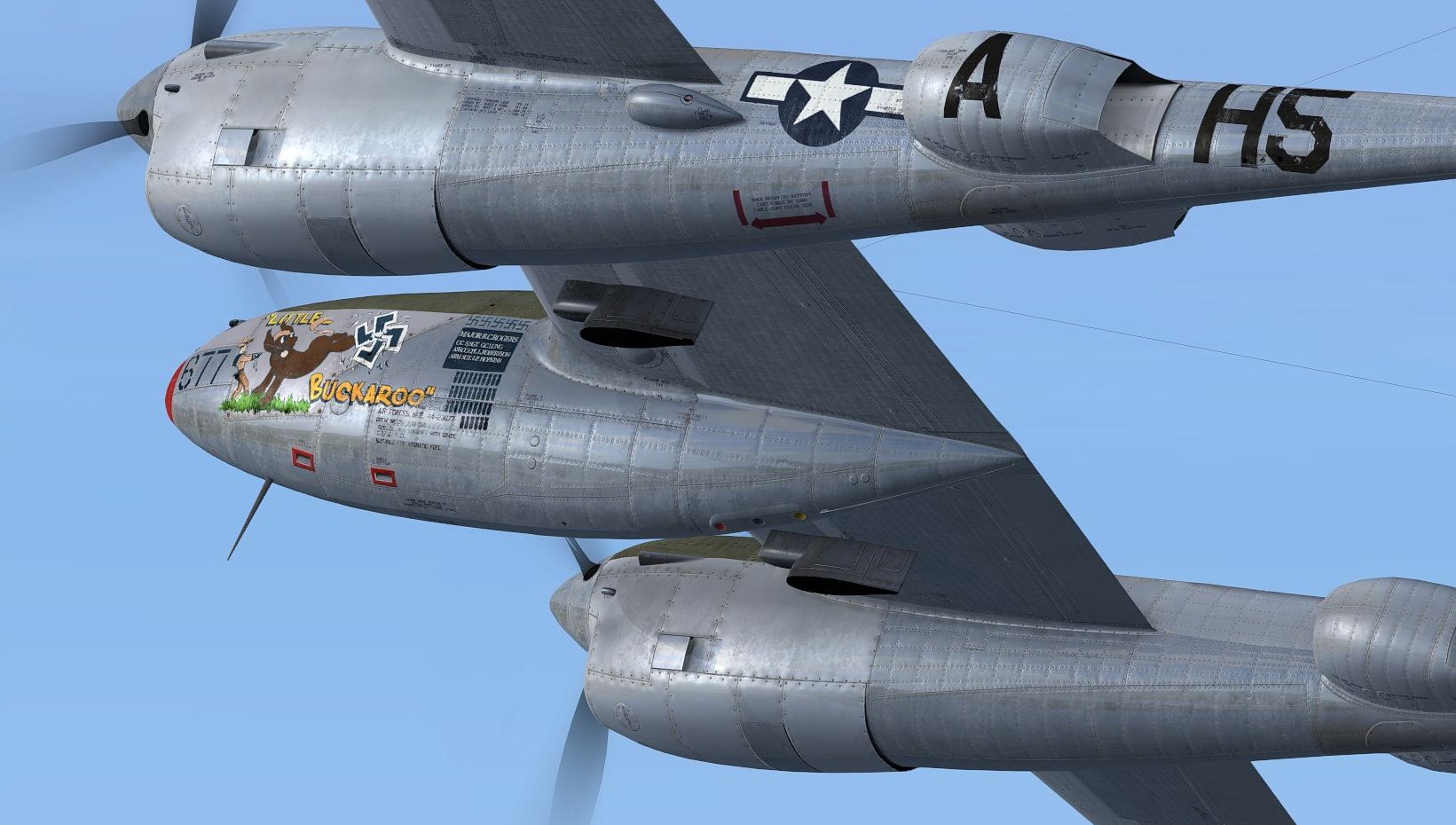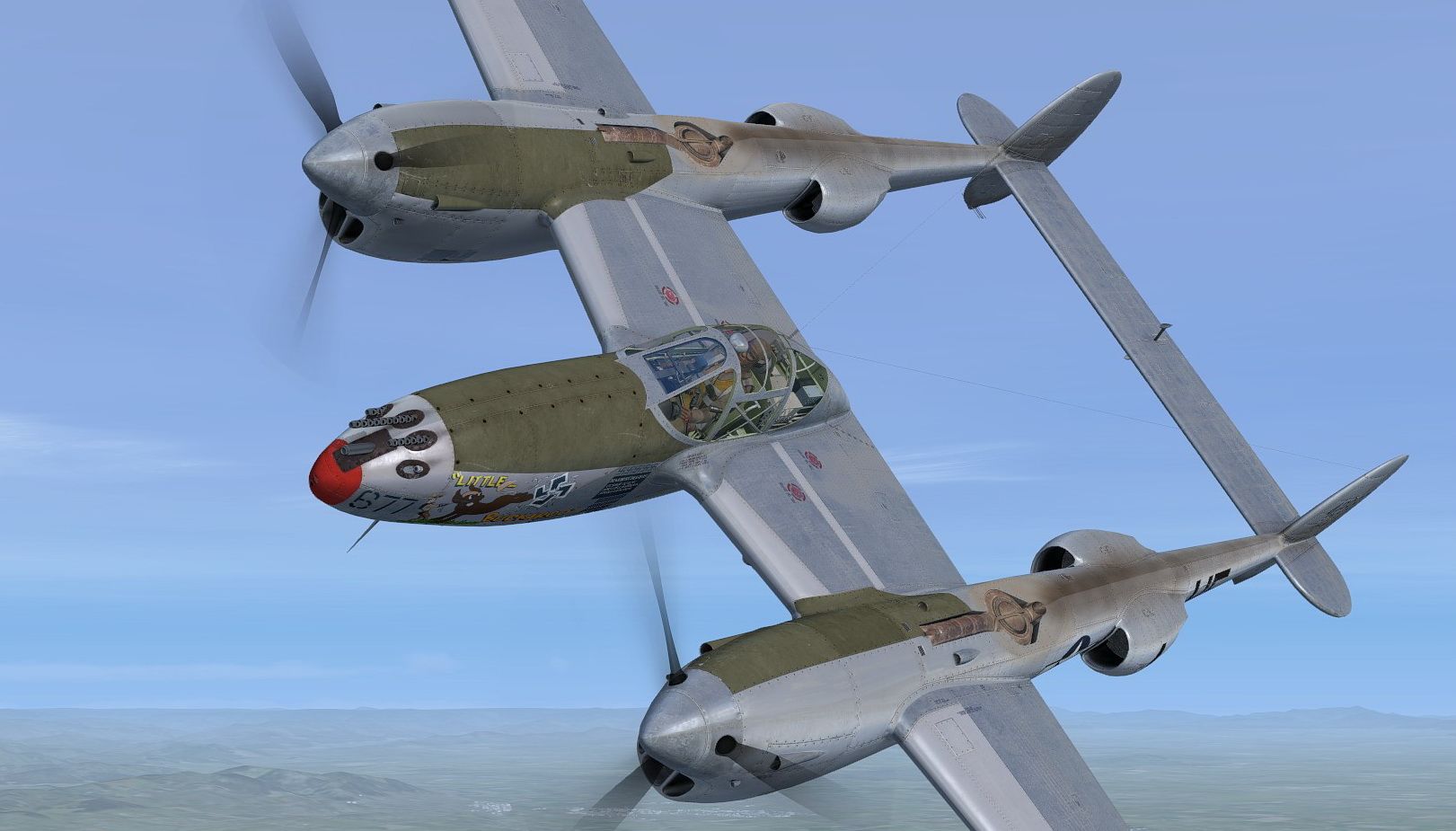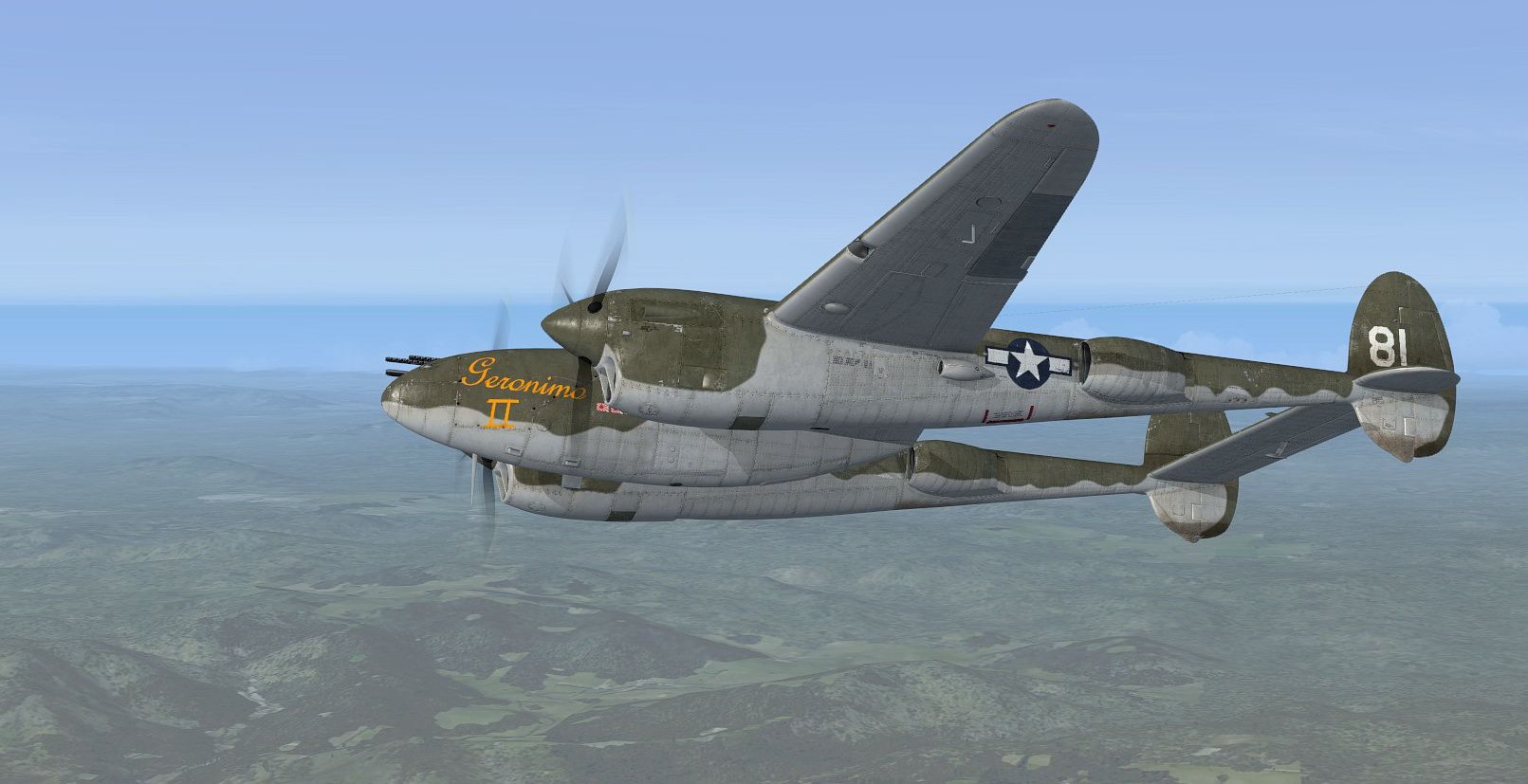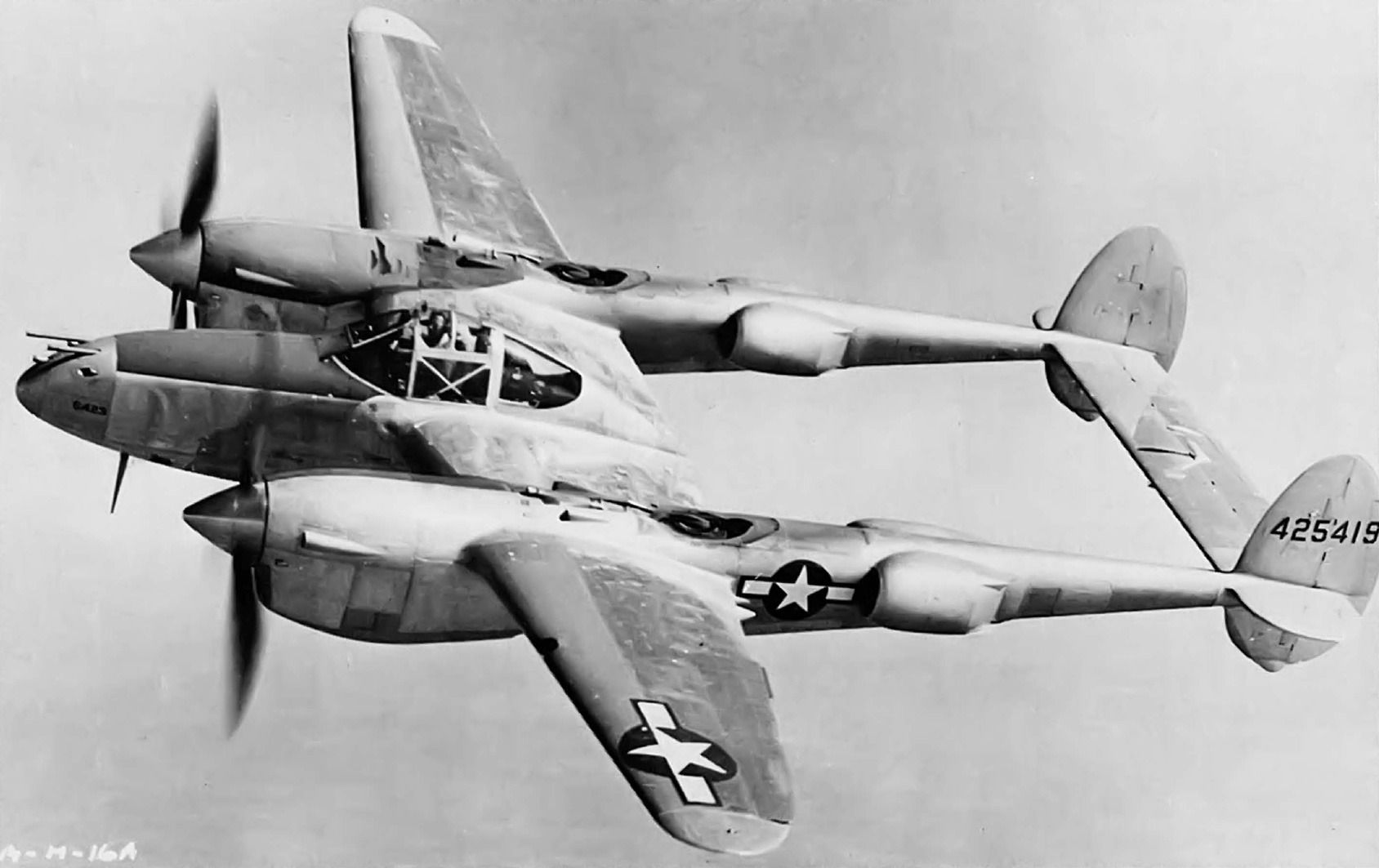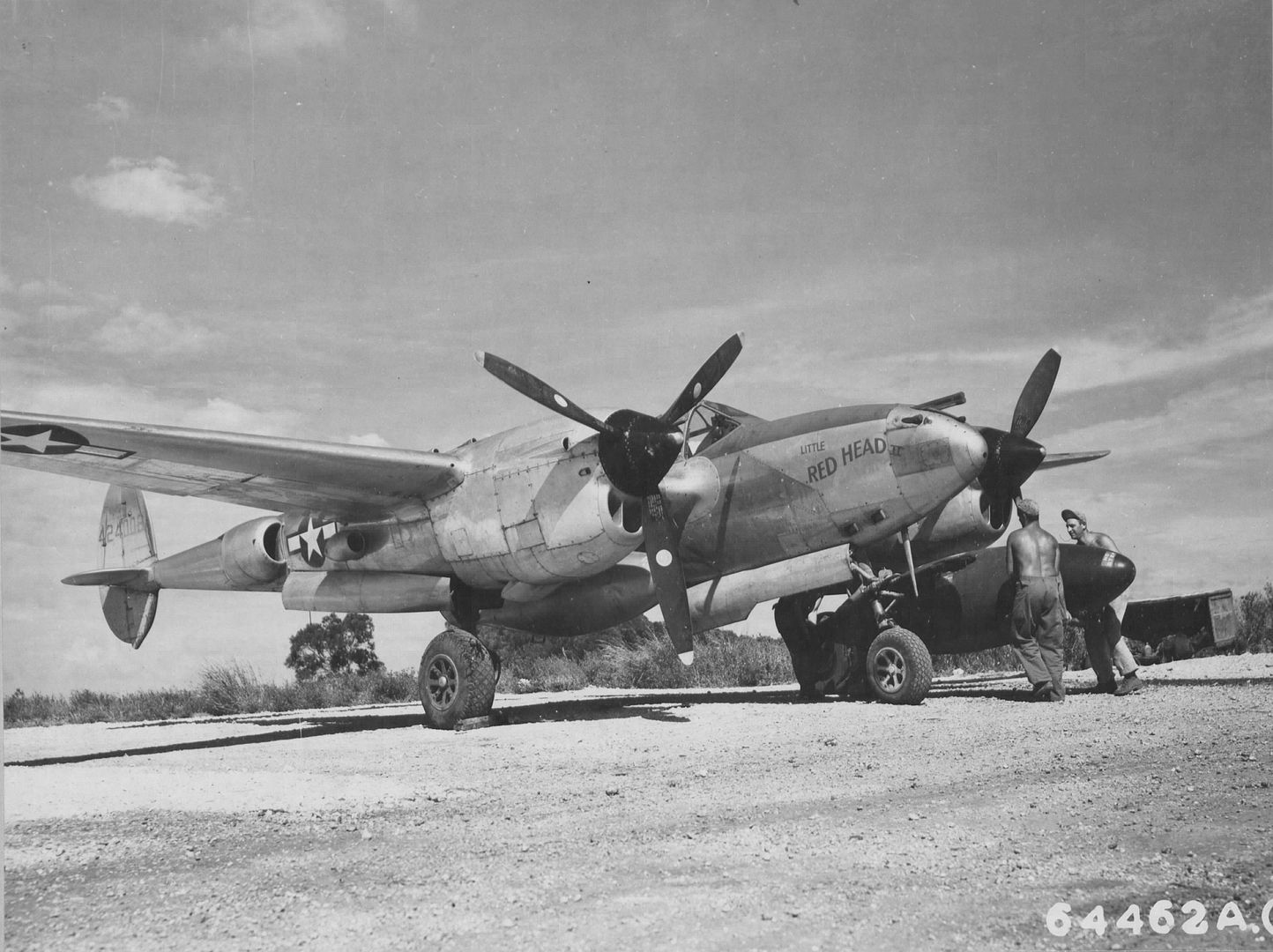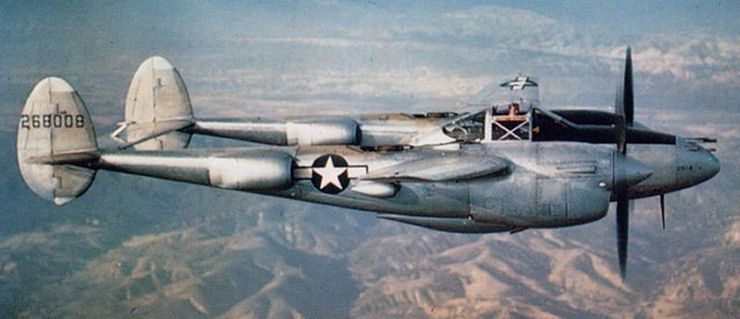-
There seems to be an uptick in Political comments in recent months. Those of us who are long time members of the site know that Political and Religious content has been banned for years. Nothing has changed. Please leave all political and religious comments out of the forums.
If you recently joined the forums you were not presented with this restriction in the terms of service. This was due to a conversion error when we went from vBulletin to Xenforo. We have updated our terms of service to reflect these corrections.
Please note any post refering to a politician will be considered political even if it is intended to be humor. Our experience is these topics have a way of dividing the forums and causing deep resentment among members. It is a poison to the community. We appreciate compliance with the rules.
The Staff of SOH
You are using an out of date browser. It may not display this or other websites correctly.
You should upgrade or use an alternative browser.
You should upgrade or use an alternative browser.
Milviz P-38 textures
- Thread starter jankees
- Start date
jankees
SOH-CM-2025
still work in progress though, here with different spec files:
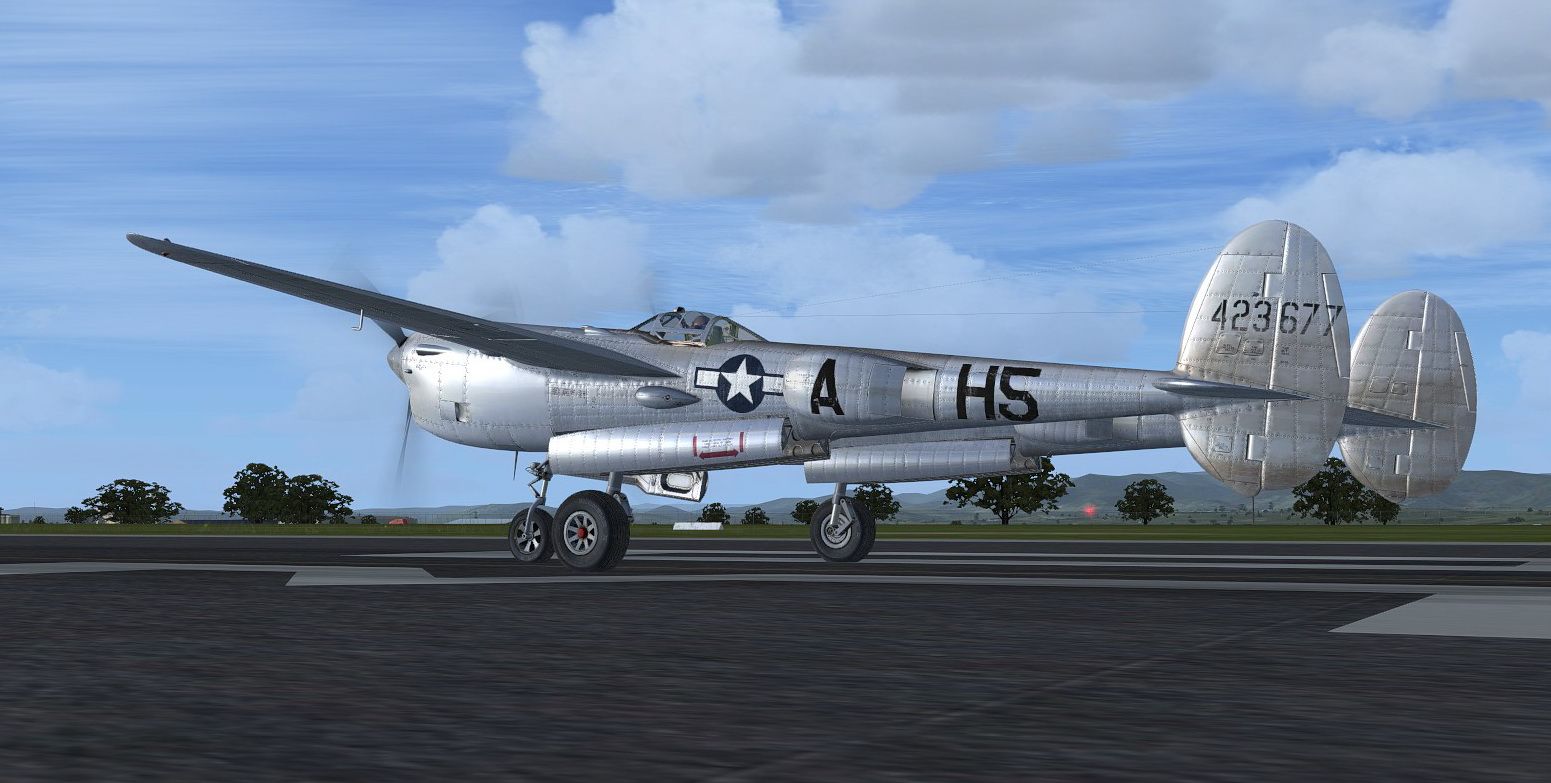
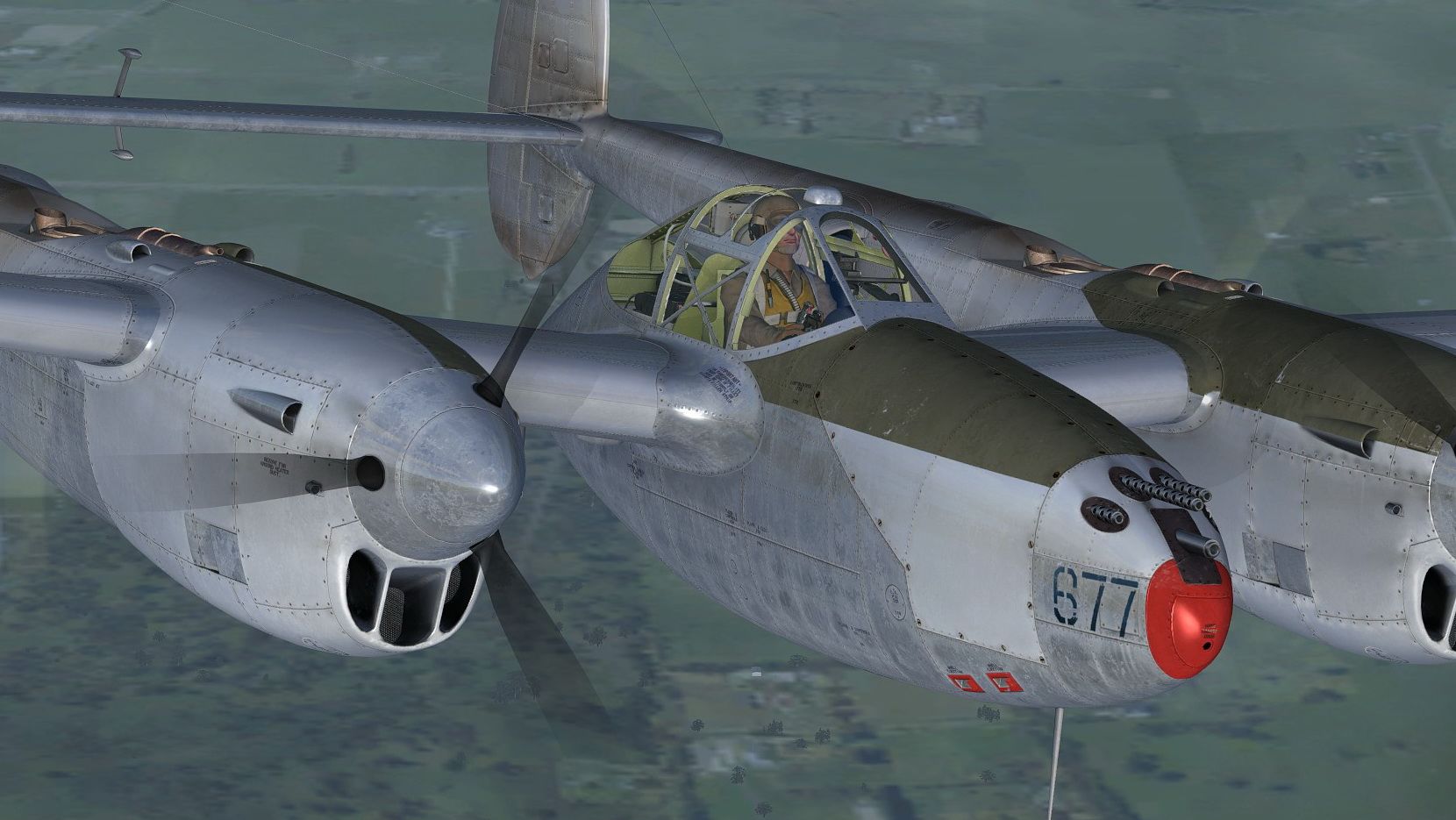
I still need to apply the paint to the rear of the booms:
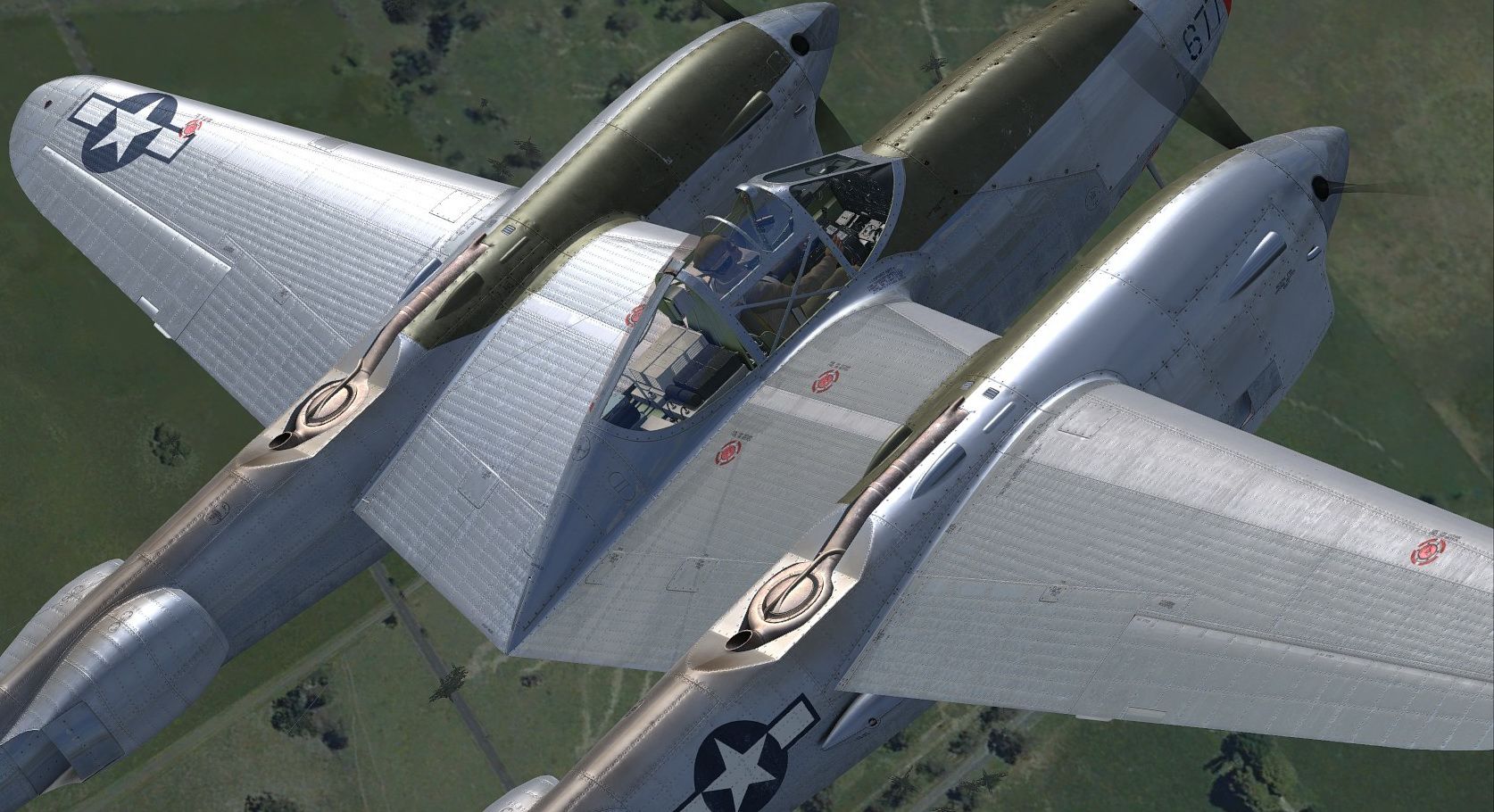
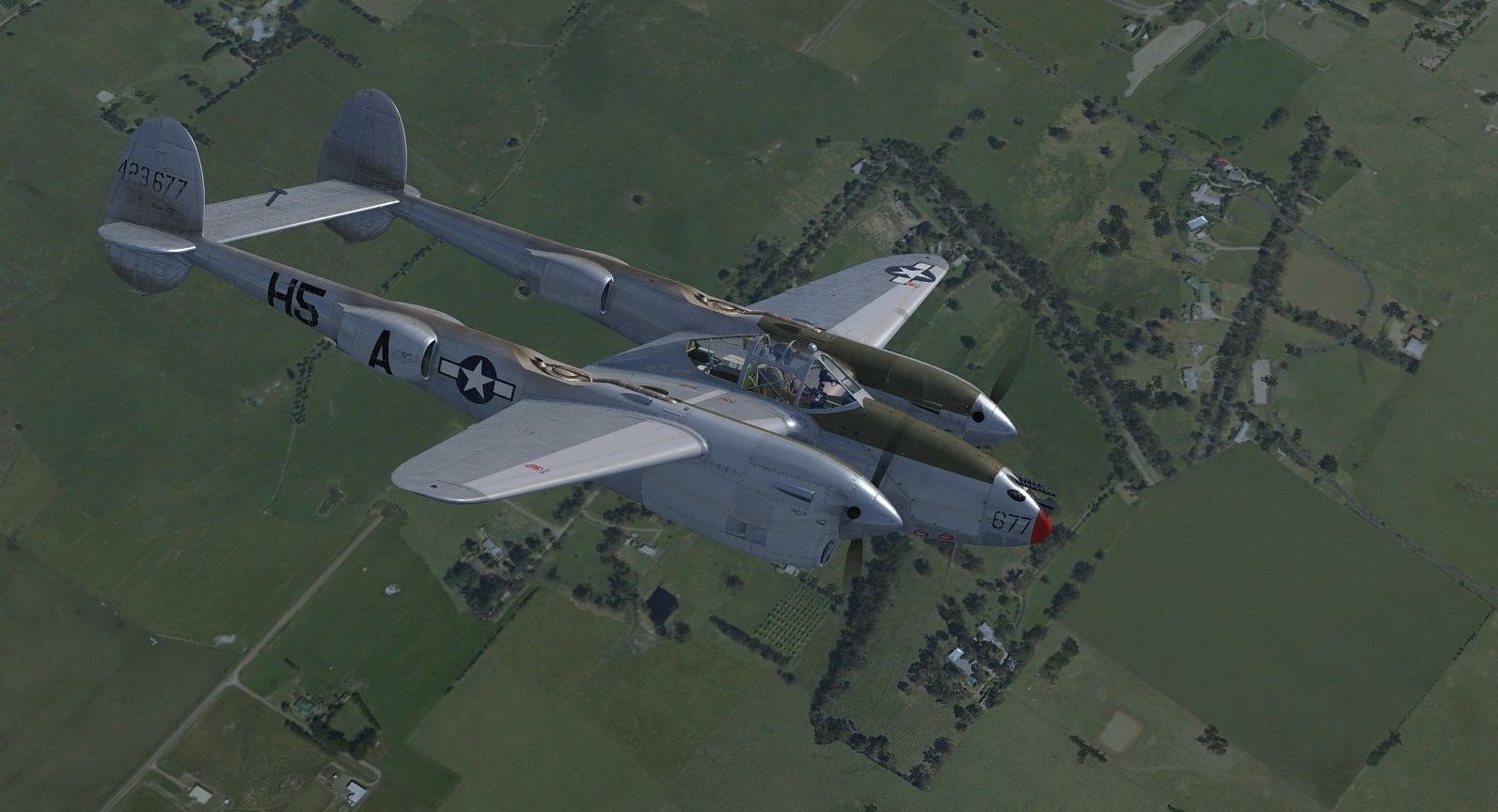
What do you think, better? Or do I need to try and make the metal stand out a bit more, for instance by giving it sharper reflections?
Or do I need to tone down the painted parts a bit?


I still need to apply the paint to the rear of the booms:


What do you think, better? Or do I need to try and make the metal stand out a bit more, for instance by giving it sharper reflections?
Or do I need to tone down the painted parts a bit?
Alan_A
Charter Member
To me the textures in your second post look right - there's a clear difference among the flat-painted, painted metal and bare metal areas, but not so strong as to be exaggerated. I'm not sure that more shine on the bare metal would help, unless you're trying for that over-polished warbird-at-an-airshow look that you see on modern P-51s. But that show look never appealed to me, so maybe I'm just reflecting (so to speak) my own preferences...
jankees
SOH-CM-2025
This for the not-yet-released Milviz P-38L.
and yes, those prop textures... to be honest, I don't think they look that good in motion, but hey, that's only my opinion...
Me, I'm only playing with the paintkit, and to wet your appetite of course!
And of course, most of the texture work was done by Milviz, we have to give credit where credit is due!
and yes, those prop textures... to be honest, I don't think they look that good in motion, but hey, that's only my opinion...
Me, I'm only playing with the paintkit, and to wet your appetite of course!
And of course, most of the texture work was done by Milviz, we have to give credit where credit is due!
Bradburger
Charter Member
Top work there Jankees!
Looks even better now the alpha channels are active.
I hope Milviz include, or ask you to do some, if not all the schemes for their forthcoming release.
Cheers
Paul
Looks even better now the alpha channels are active.
I hope Milviz include, or ask you to do some, if not all the schemes for their forthcoming release.
Cheers
Paul
Ian Warren
Charter Member
I really do like that first screen, emphasizing the structure and airframe, JK, you are the right choice to tinker in this field, SUPERB!
jankees
SOH-CM-2025
Back from my latest trip, and back to the P-38, still working on the painted areas..
Here's my latest attempt, now including the upper part of the booms and the radiators:
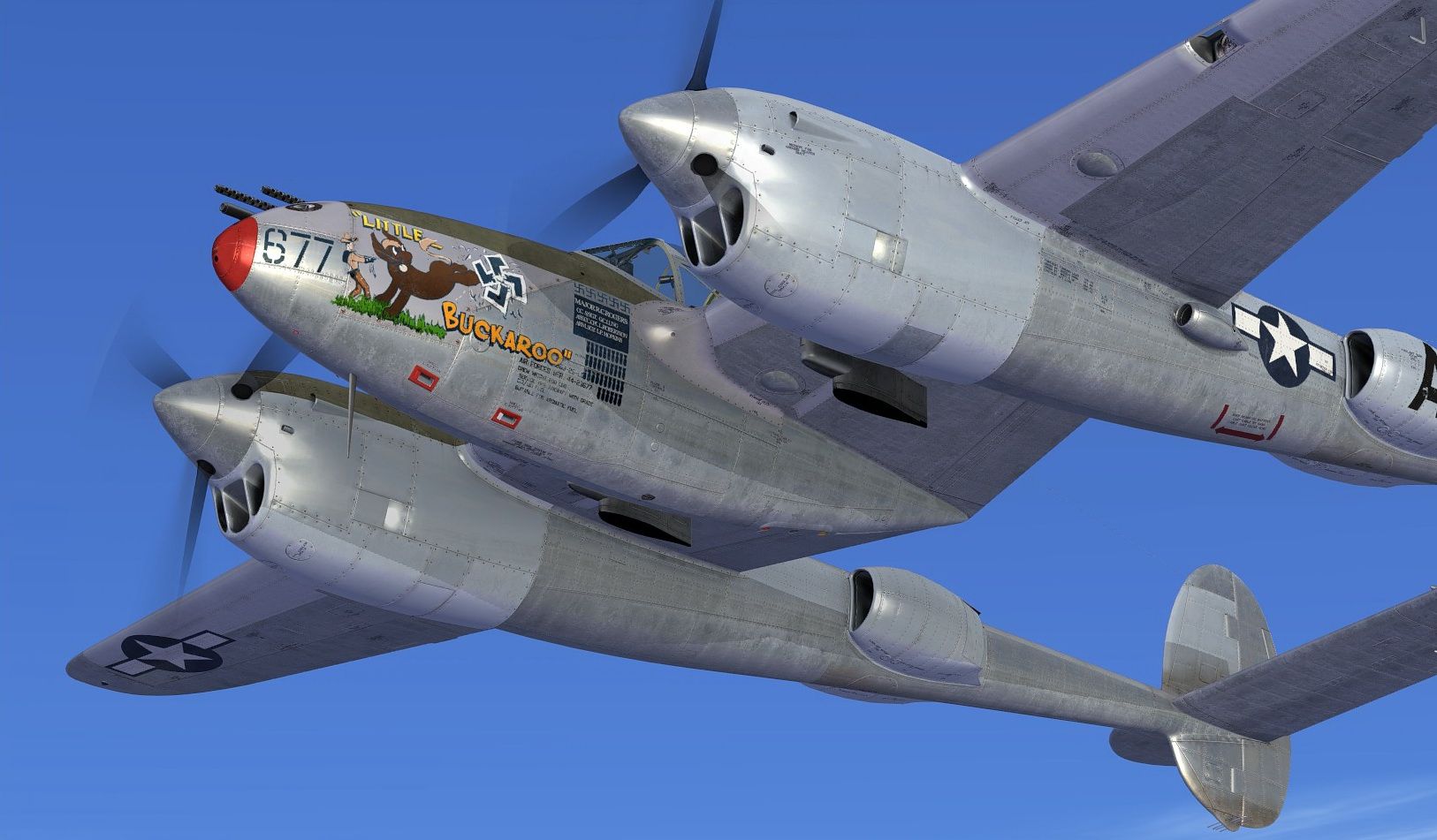
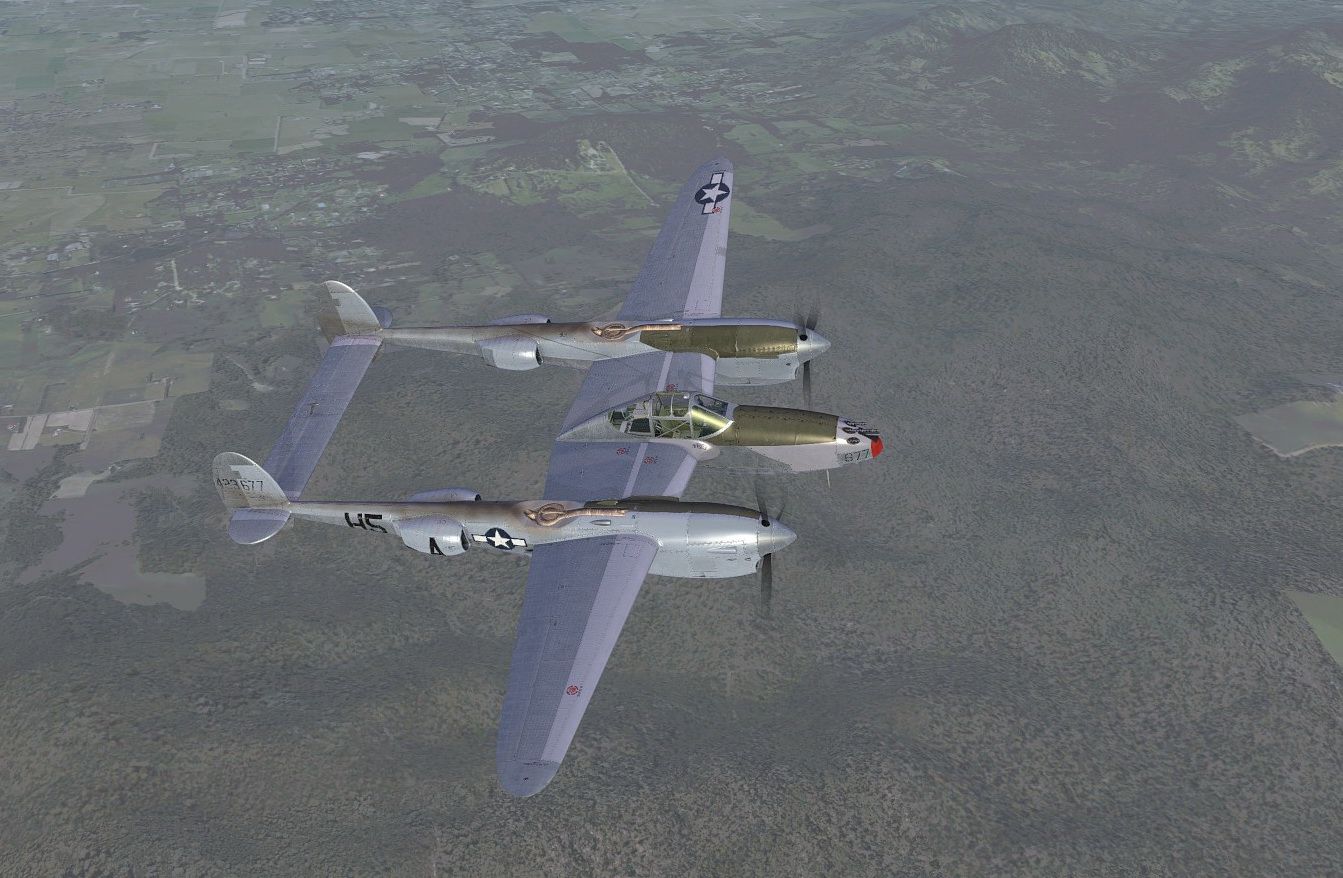
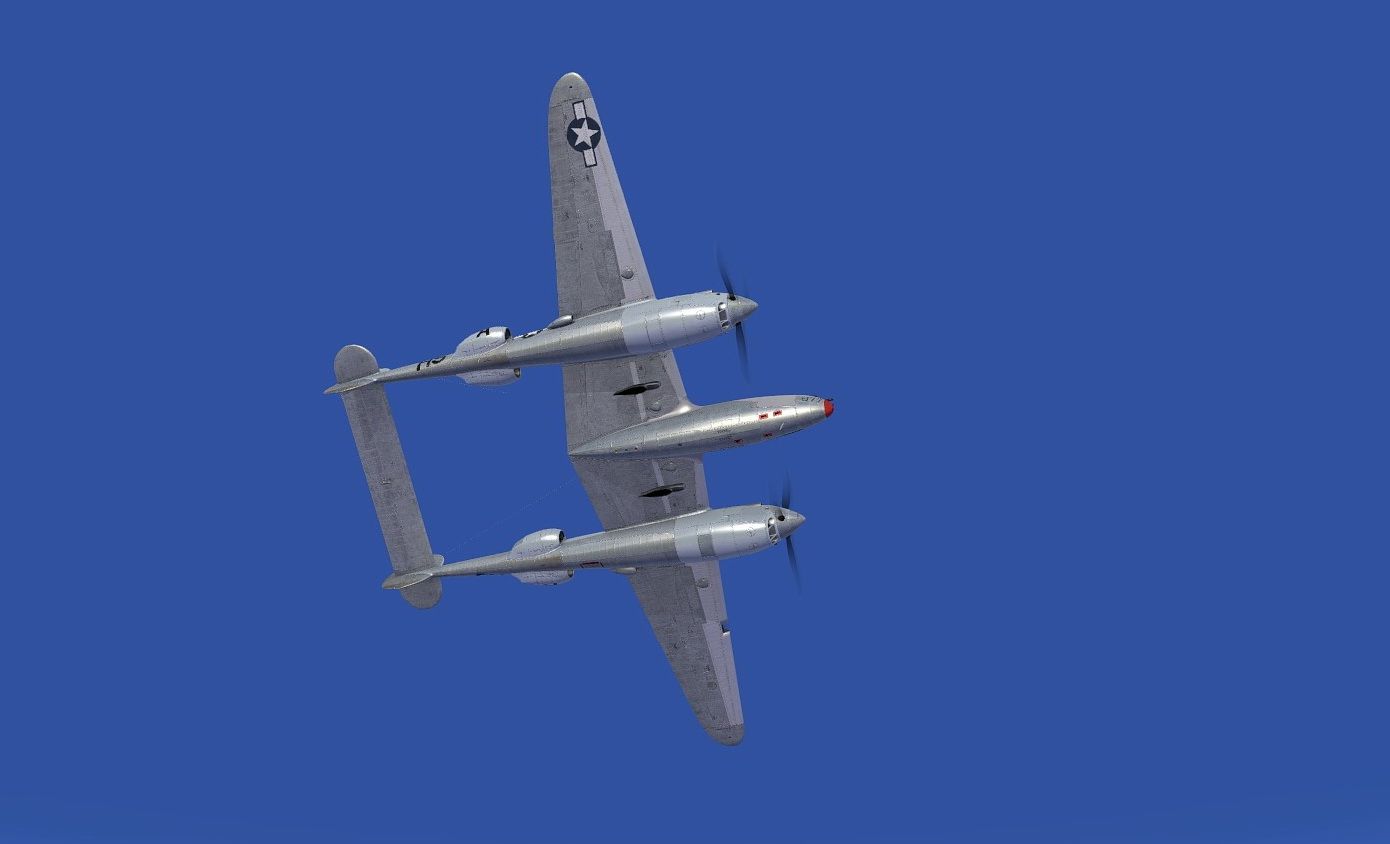
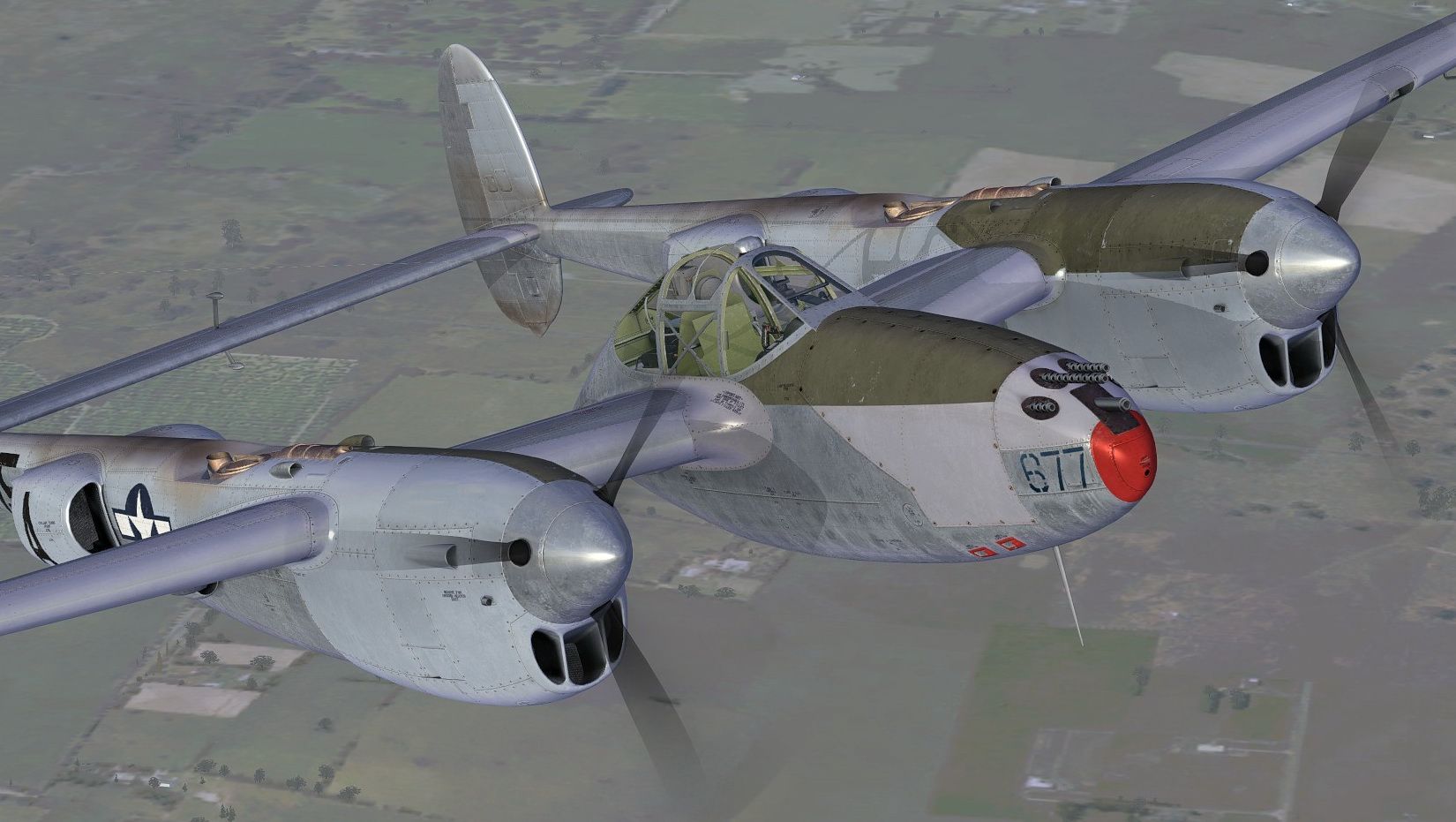
I'm not completely sure about the color of the paint, which for me is always difficult if I don't have any rgb codes, so any comments/suggestions?
Yes, there are still a few bits and pieces that need paint, this I know.
Here's my latest attempt, now including the upper part of the booms and the radiators:




I'm not completely sure about the color of the paint, which for me is always difficult if I don't have any rgb codes, so any comments/suggestions?
Yes, there are still a few bits and pieces that need paint, this I know.
Bomber_12th
SOH-CM-2025
Jan Kees, I'm curious of the source of the information about the painted areas? I've never delved into the production details of the P-38 myself, and so I've been wondering why some of those skins in particular would have been painted silver. All of those gun bay and cowl panel assemblies had spot welding, since you have an inner stamped section spot-welded and riveted to the outer skin, to form the individual assemblies. Spot-welded assemblies had to go-together unpainted, with the metal skins acid-etched prior to the spot welding being done. Left bare, the acid-etched skins appear brighter and more dull than the untouched clad finishes of the original aluminum sheets, and during wartime production, it wouldn't have been out of the question to have simply left those assemblies bare metal. However, if they did take the time to primer the insides of the cowl and gun bay door assemblies, which could only happen after the spot-welding was completed on these assemblies, this would then explain the need to paint the outer skins on those assemblies silver, to cover the chromate zinc on the outer surfaces - "dull silver" paint/dope chosen simply to match the look of the bare metal as close as possible.
Other parts where spot welding was common were the fairings and fillets, where usually there would be formers that the fairing/fillet skins were spot-welded to, and some of the fairing/fillet skins were usually made from two halves that were welded together as well. These skins would also be acid-etched, appearing brighter and more dull compared to the untouched clad aluminum finishes. From the aluminum manufacturers themselves (Alcoa/Reynolds), aluminum sheets were provided in both shiny and dull clad finishes, which is another reason for panel variations.
Another item would be to darken the areas around the turbo chargers where the metal was stainless steel rather than aluminum. Something I haven't seen yet in these repaints is the oval mirrors on the inner cowls, facing the cockpit - those mirrors that were there so that the pilot could tell the positioning of the nose gear. Another nice thing to see added would be the "No Step" red-blocked markings on the top and bottom of the side windscreens.
Clearly in period photos, you can see the variations in finishes across the aircraft. In some photos, the gun bay doors and cowl panels appear bare metal, just brighter, where as in others they do appear to be so dull/non-reflective to the point of appearing to have been painted silver.
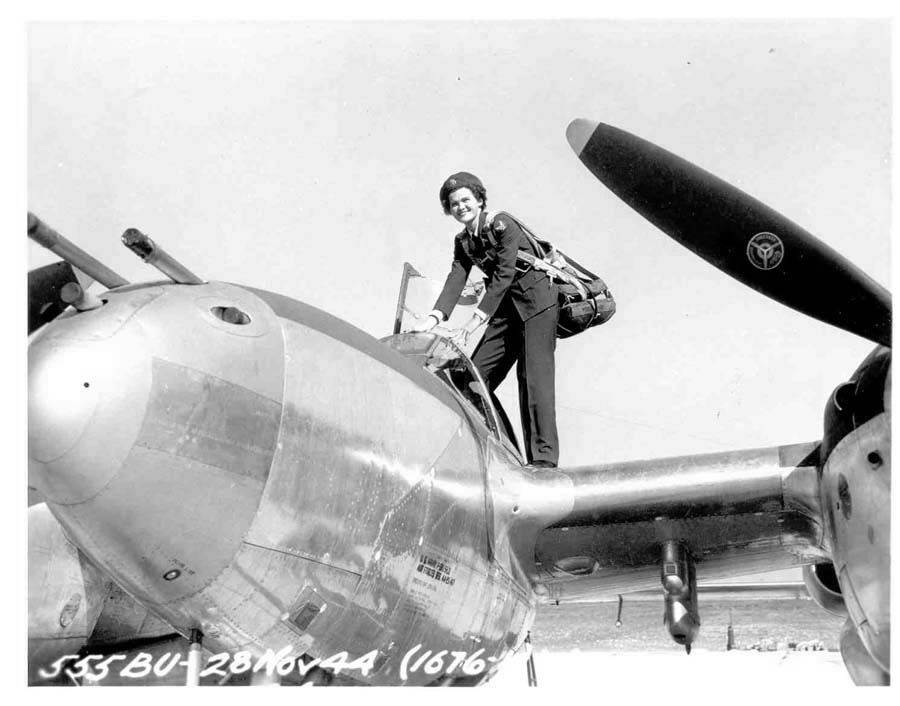
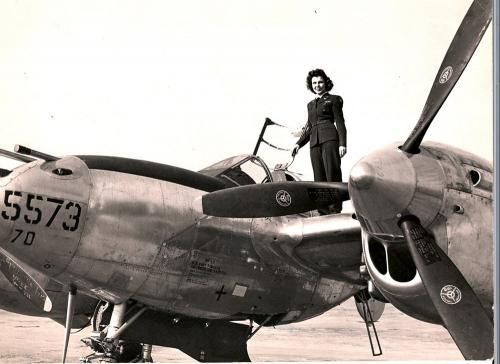
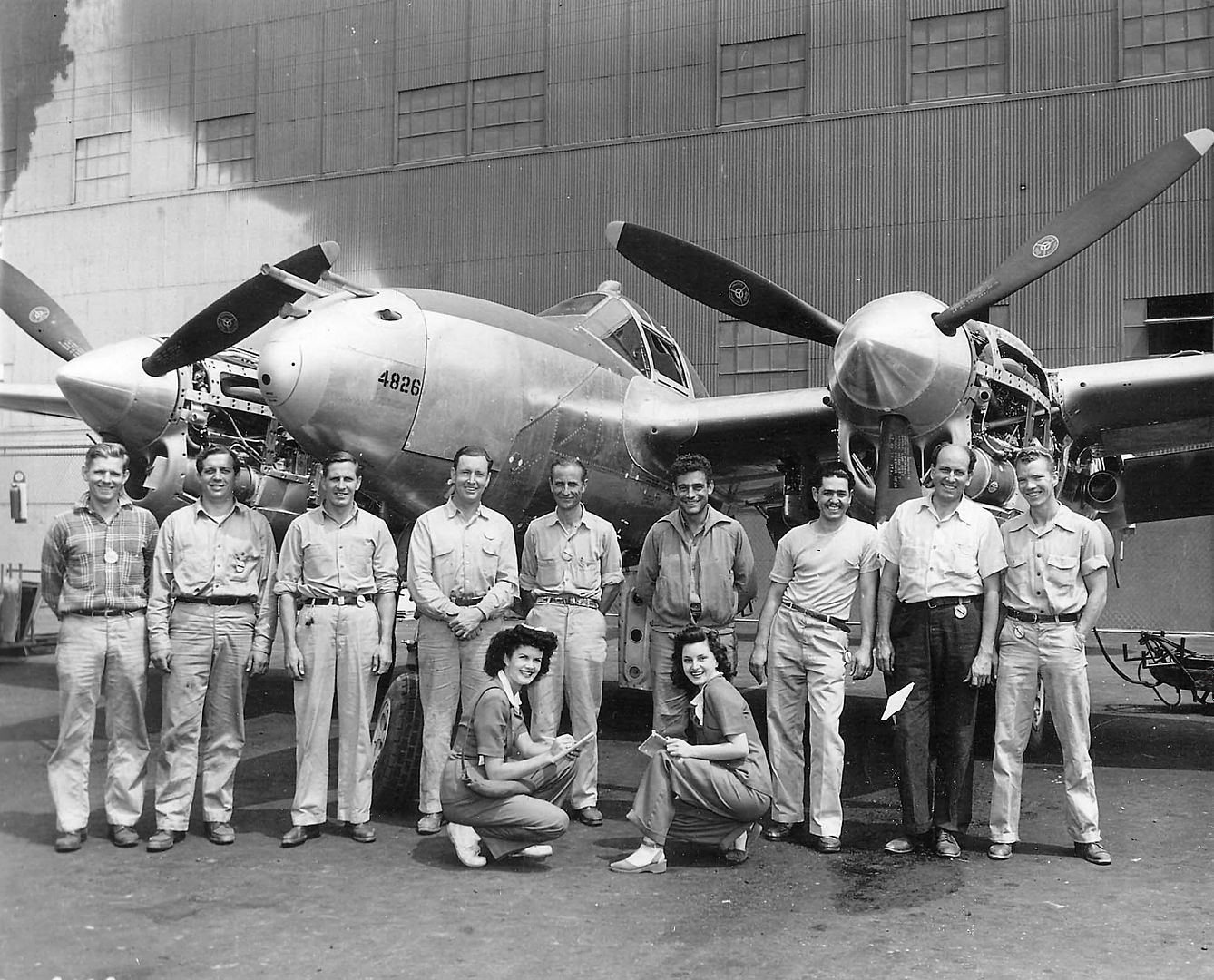
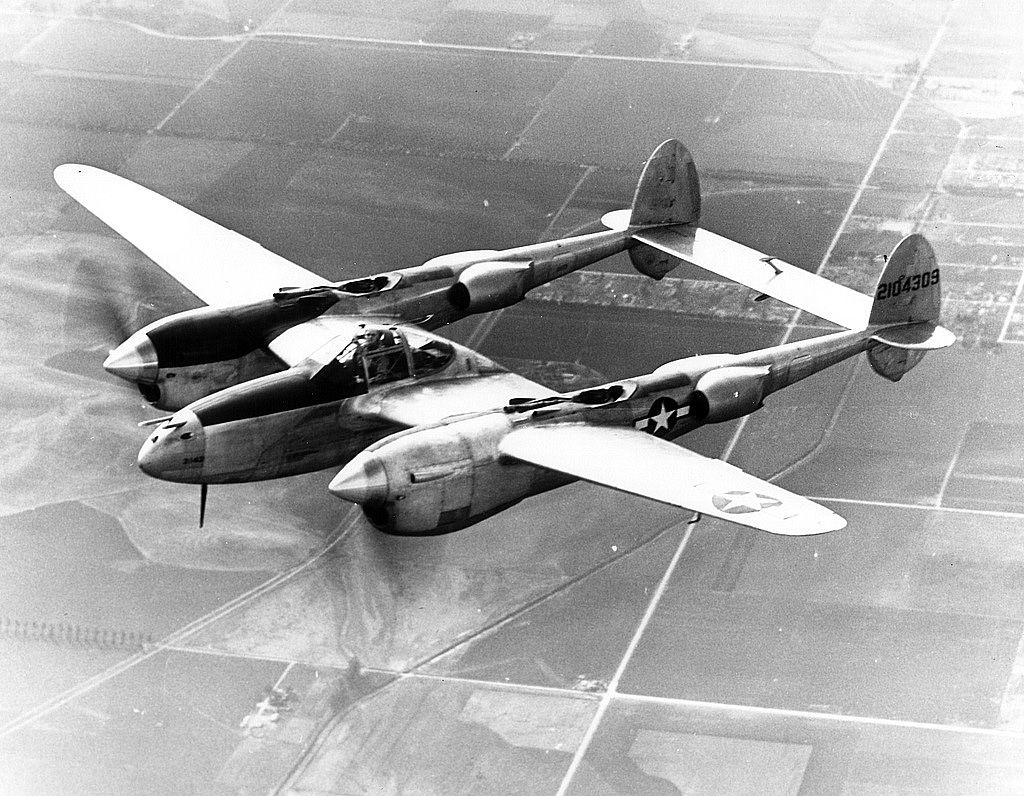
Other parts where spot welding was common were the fairings and fillets, where usually there would be formers that the fairing/fillet skins were spot-welded to, and some of the fairing/fillet skins were usually made from two halves that were welded together as well. These skins would also be acid-etched, appearing brighter and more dull compared to the untouched clad aluminum finishes. From the aluminum manufacturers themselves (Alcoa/Reynolds), aluminum sheets were provided in both shiny and dull clad finishes, which is another reason for panel variations.
Another item would be to darken the areas around the turbo chargers where the metal was stainless steel rather than aluminum. Something I haven't seen yet in these repaints is the oval mirrors on the inner cowls, facing the cockpit - those mirrors that were there so that the pilot could tell the positioning of the nose gear. Another nice thing to see added would be the "No Step" red-blocked markings on the top and bottom of the side windscreens.
Clearly in period photos, you can see the variations in finishes across the aircraft. In some photos, the gun bay doors and cowl panels appear bare metal, just brighter, where as in others they do appear to be so dull/non-reflective to the point of appearing to have been painted silver.




Bomber_12th
SOH-CM-2025
jankees
SOH-CM-2025
John, I found the details about the painted bits in the book "P-38 Lightning cz 3" by Adam Jarski and Zbigniew Kolacha, nr 70 in the Monografie Lotnicze series. According to them, the leading edges of the wings were filled, sanded and painted, while the upper part of the booms, the radiators, the gun doors, the nose tip and and the part around the guns and parts of the elevator were painted.
If you look at the pics you posted, especially at the pic of 44-25419, you can see this quite clearly. I've gone over a lot of pics of frontline aircraft as well, and it is not always clear due to the amount of dirt and grime, I've found that especially the doors to the gun compartment (where you usually find the noseart, and which is consequently most often photographed) are nearly always painted. The wings and booms are not so clear, but it is hard to find good pictures of those.
A few examples
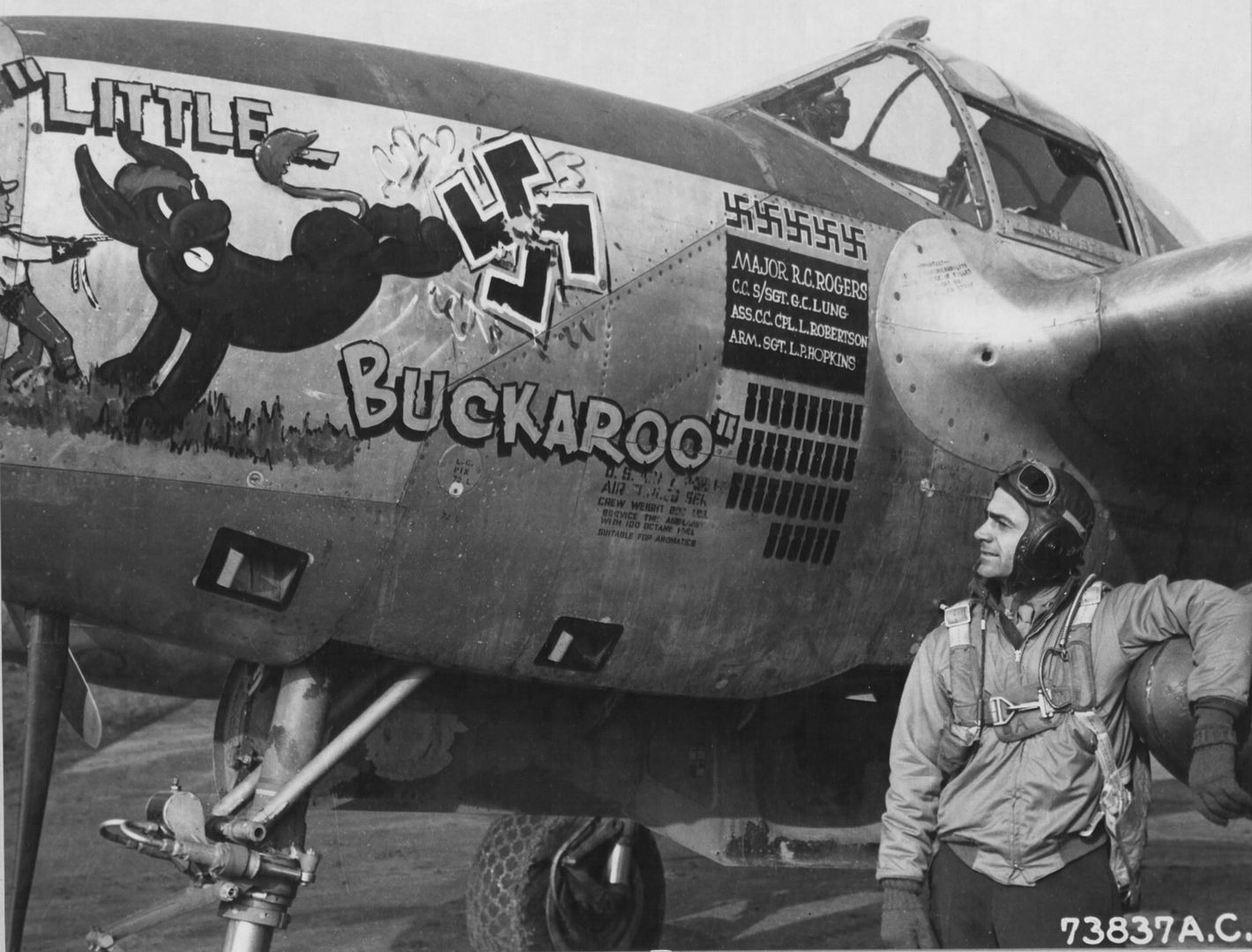
the subject matter of the paint we're talking about. Clearly the gun door and the edge of the wing fairing have been painted, the leading edge too I think.
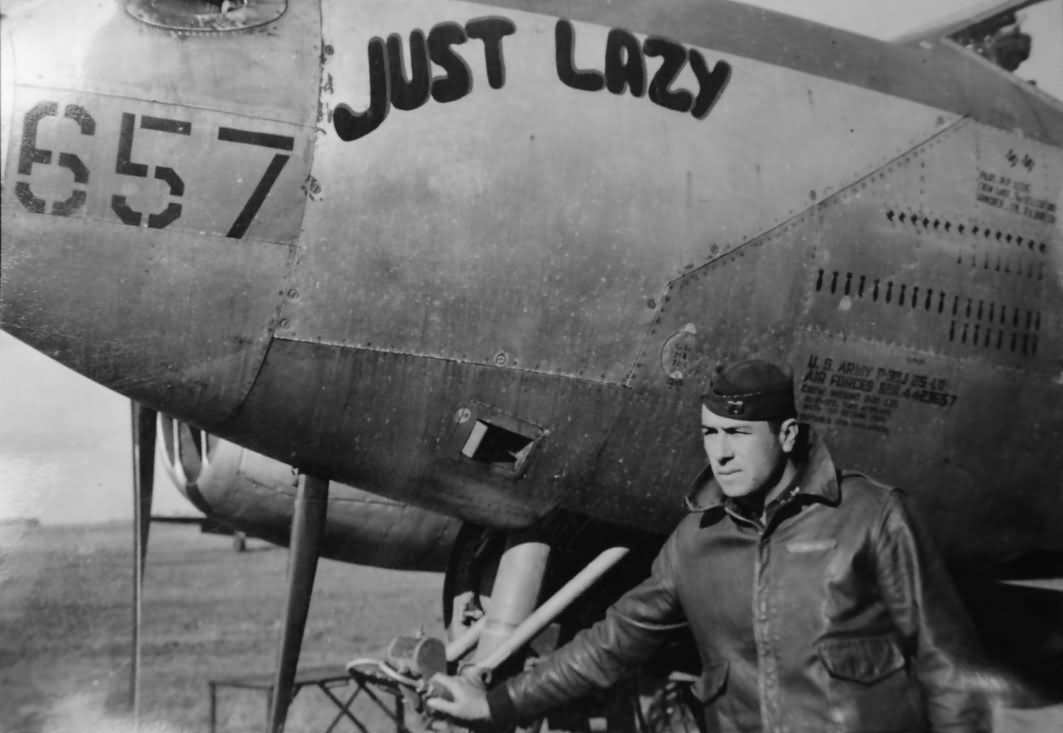
here it looks as if the entire nose tip has been painted as well
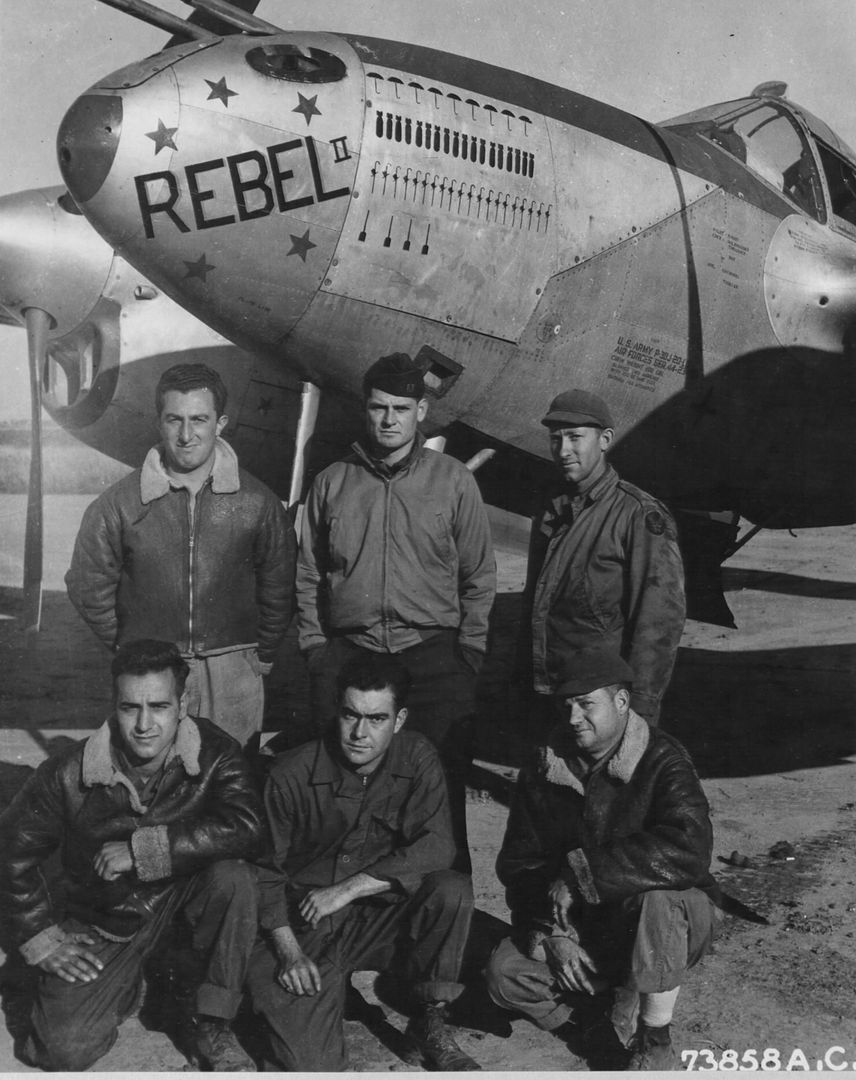
while here it looks as if it is only the nose tip and the part where the guns stick out, and the big doors of cours.
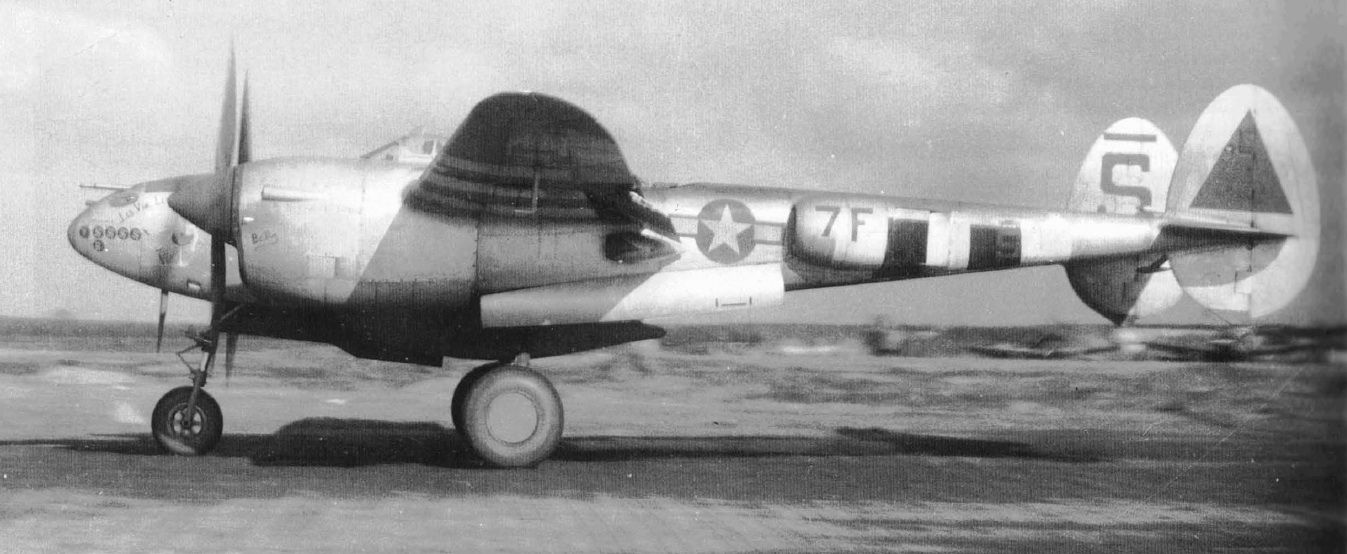
a side view, note the contrast underneath the wing between the engine compartment and the rest of the boom
If you look at the pics you posted, especially at the pic of 44-25419, you can see this quite clearly. I've gone over a lot of pics of frontline aircraft as well, and it is not always clear due to the amount of dirt and grime, I've found that especially the doors to the gun compartment (where you usually find the noseart, and which is consequently most often photographed) are nearly always painted. The wings and booms are not so clear, but it is hard to find good pictures of those.
A few examples

the subject matter of the paint we're talking about. Clearly the gun door and the edge of the wing fairing have been painted, the leading edge too I think.

here it looks as if the entire nose tip has been painted as well

while here it looks as if it is only the nose tip and the part where the guns stick out, and the big doors of cours.

a side view, note the contrast underneath the wing between the engine compartment and the rest of the boom
jankees
SOH-CM-2025
but there's exceptions too:
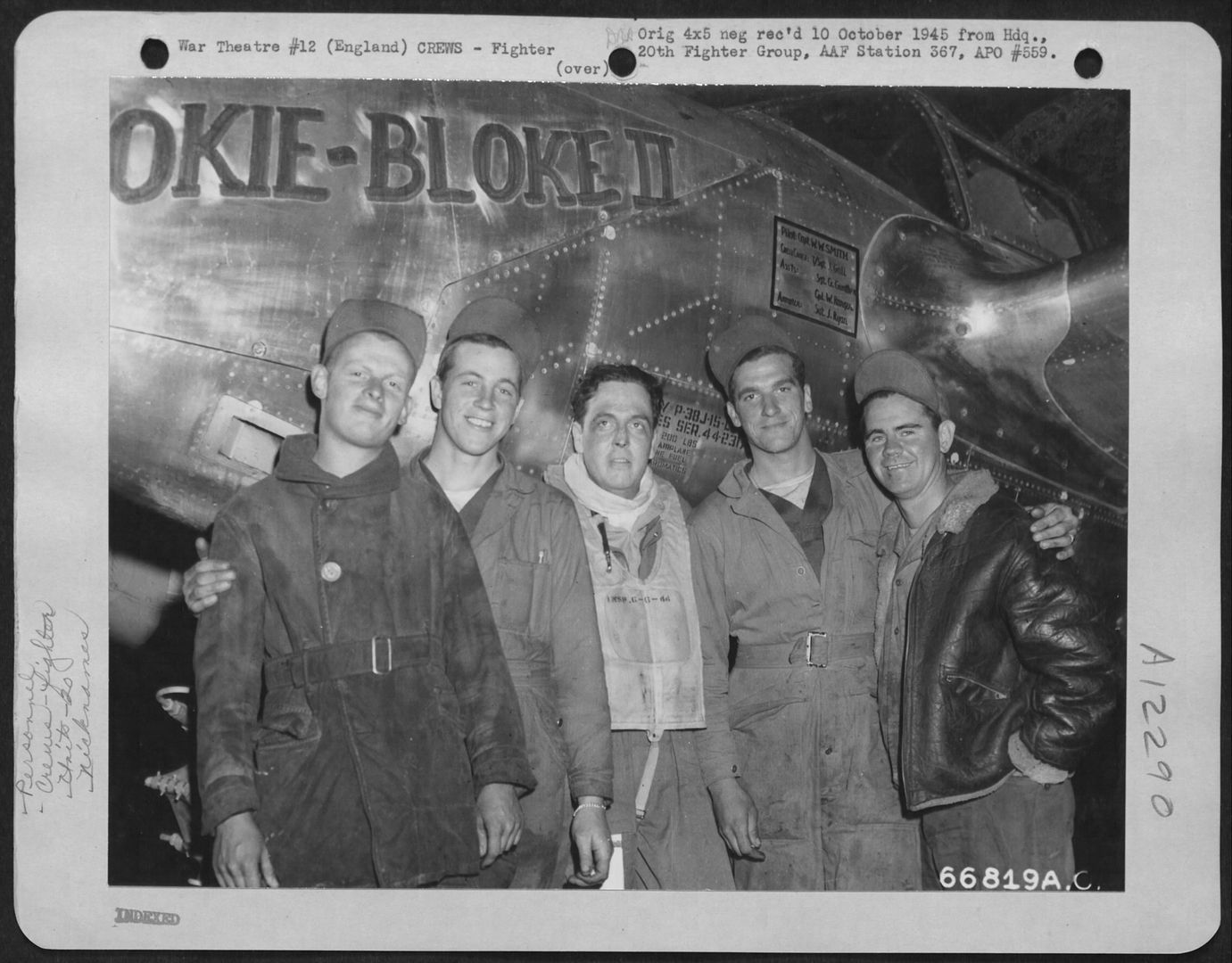
here the gun door, with the 'Okie-Bloke' on it seems to have been in bare metal. Maybe it was polished in the field, maybe it was never painted?
Most doors I looked at of wartime aircraft seem painted to me, as do most engine compartments and leading edges of the wings, so I thought I'd incorporate it in my paints. I still need to paint a few bits and pieces, but I'm getting there. So many texture files, so many bits and pieces.....
It does seem to have been very strong paint, because I see very little evidence of the silver paint being worn or peeled away.
OK, back to photoshop...

here the gun door, with the 'Okie-Bloke' on it seems to have been in bare metal. Maybe it was polished in the field, maybe it was never painted?
Most doors I looked at of wartime aircraft seem painted to me, as do most engine compartments and leading edges of the wings, so I thought I'd incorporate it in my paints. I still need to paint a few bits and pieces, but I'm getting there. So many texture files, so many bits and pieces.....
It does seem to have been very strong paint, because I see very little evidence of the silver paint being worn or peeled away.
OK, back to photoshop...

